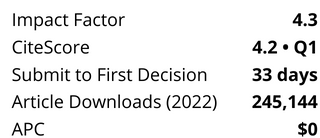The paper focuses on the properties of flocs that are required to service the needs of solid–liquid separation in conventional treatment units. Beyond the basic requirements of minimum size and surface nature to enable effective trapping on a collecting surface, field data indicate that floc water content affects treatability (as gauged by the hydraulic loading rate or treatment rate). Floc blanket clarifiers, DAF and filter units are examined in terms of implications of floc size, density and strength, insofar as they interact with the process dynamics. It is shown that these features come into play both individually and collectively and are sensitive to the floc fractal structure. It is argued that floc strength often plays a critical role in separation processes through its impact on floc size. Recognising the benefits of densification, the paper provides specific advice on how densification can be achieved. Among the many options considered, it is noted that the most straightforward means of securing greater density or strength, is by use of smaller flocs, this also benefiting dewaterability.
Skip Nav Destination
Article navigation
February 2010
This article was originally published in
Journal of Water Supply: Research and Technology-Aqua
Article Contents
Research Article|
February 01 2010
Flocs and separation processes in drinking water treatment: a review
D. H. Bache;
1Department of Civil Engineering, University of Strathclyde, Glasgow G4 0NG, UK
E-mail: d.bache@strath.ac.uk
Search for other works by this author on:
R. Gregory
R. Gregory
240 Cricklade Road, Highworth, Swindon SN6 7BL, UK
Search for other works by this author on:
Journal of Water Supply: Research and Technology-Aqua (2010) 59 (1): 16–30.
Article history
Received:
March 26 2009
Accepted:
October 15 2009
Citation
D. H. Bache, R. Gregory; Flocs and separation processes in drinking water treatment: a review. Journal of Water Supply: Research and Technology-Aqua 1 February 2010; 59 (1): 16–30. doi: https://doi.org/10.2166/aqua.2010.028
Download citation file:
Sign in
Don't already have an account? Register
Client Account
You could not be signed in. Please check your email address / username and password and try again.
Could not validate captcha. Please try again.




%20cropped.png?versionId=5947)